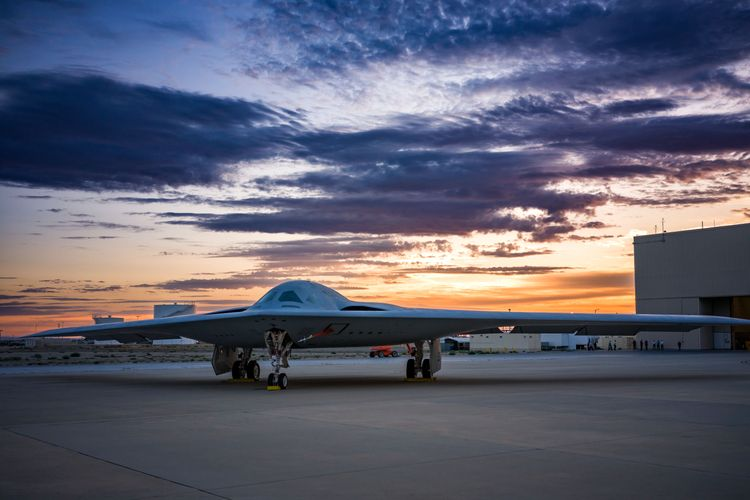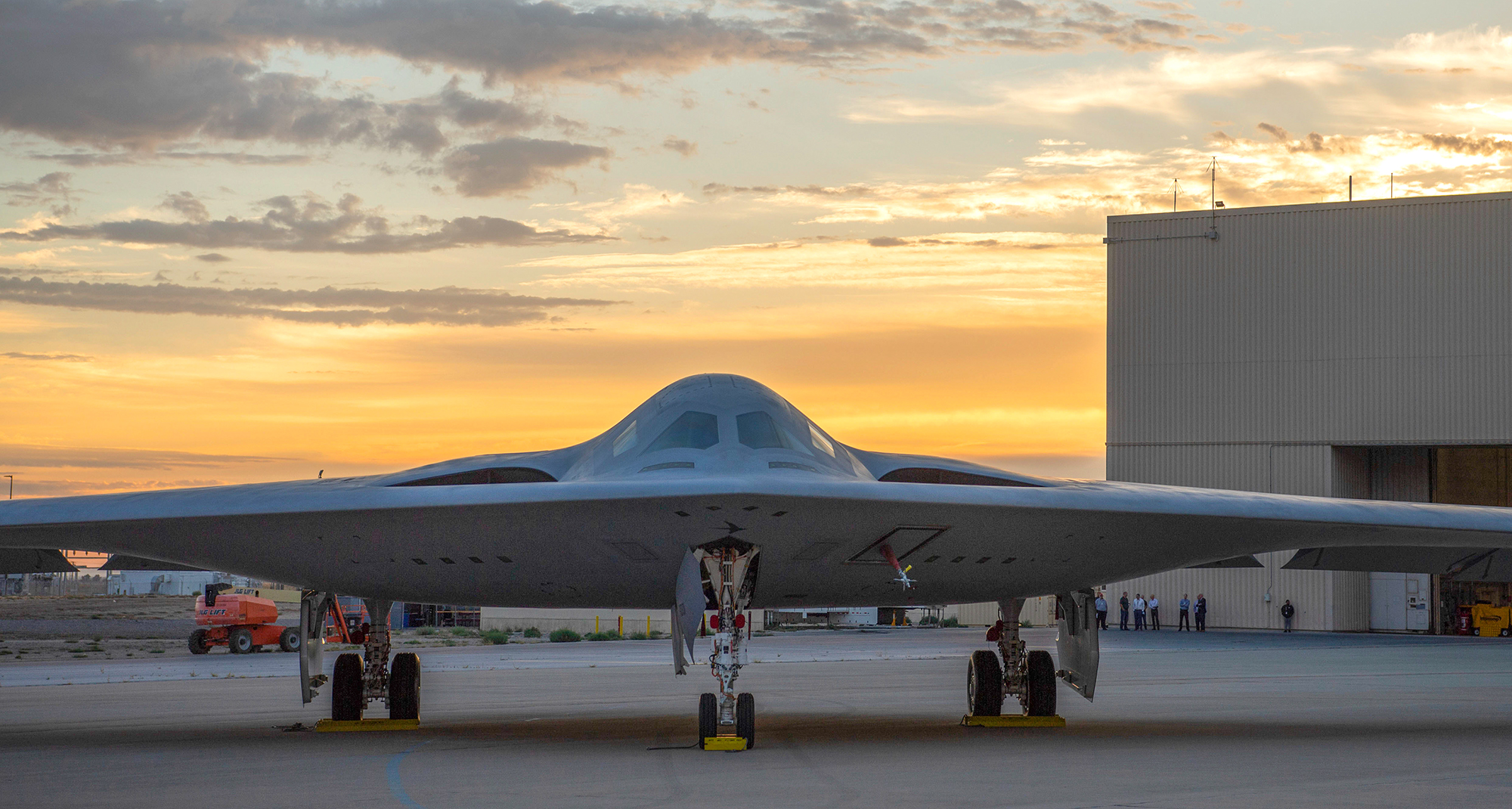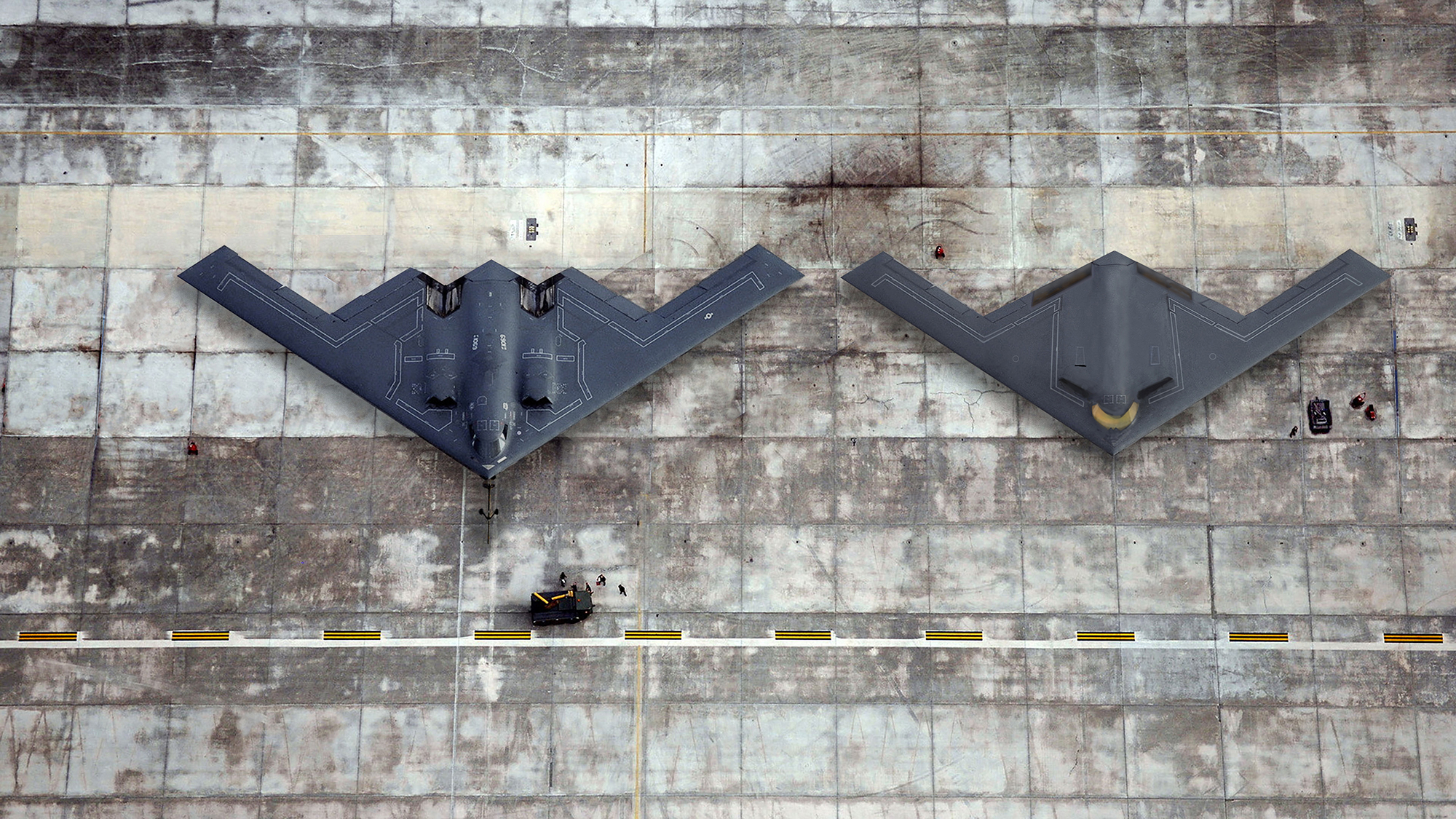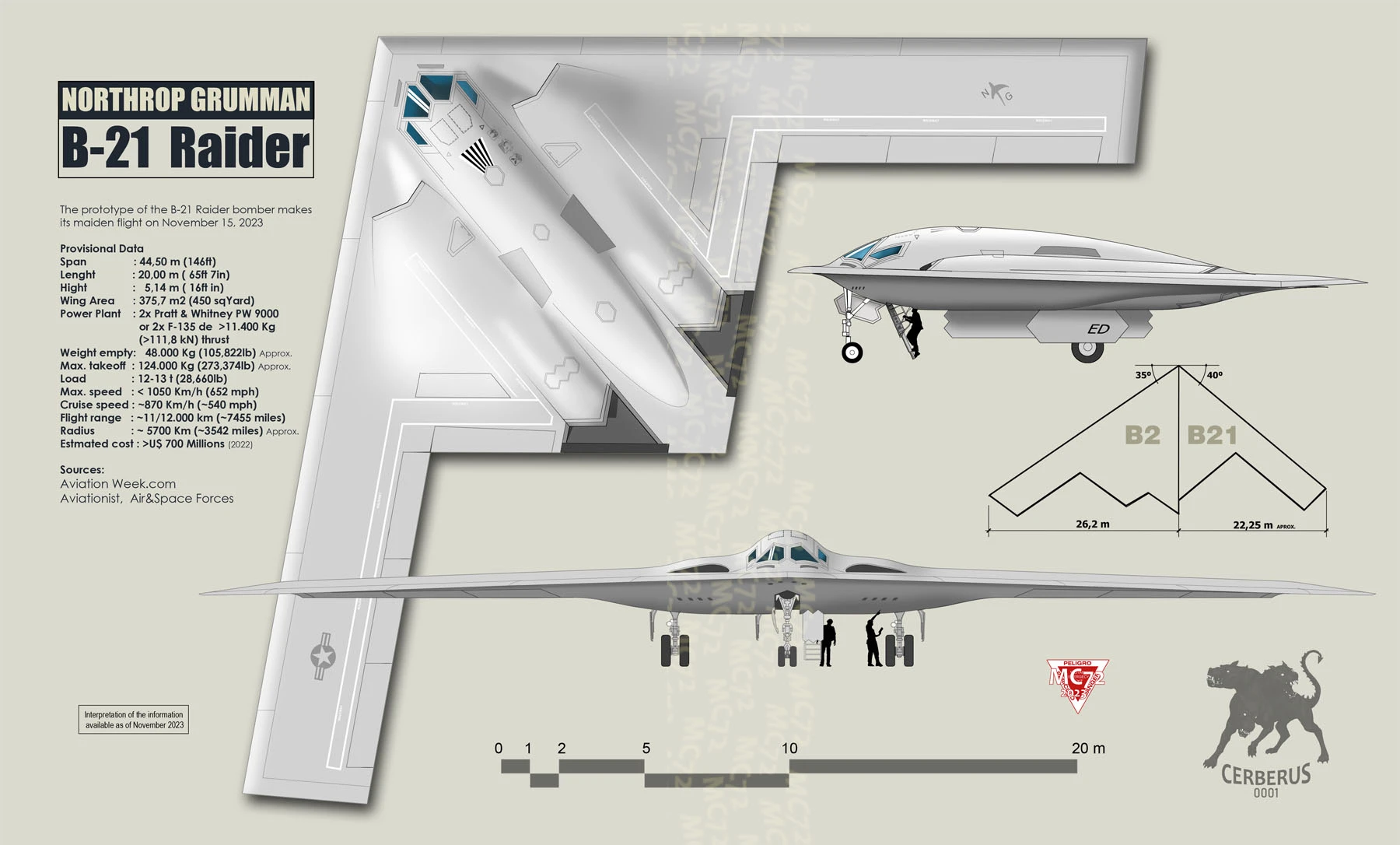And yes, there are some problems with the long oneSweep angle is 35, not 40. Distortion due to most spotters position play tricks. Hence while wingspan is 48 m, lenght is less, about 20-21 m.
Attachments
Last edited:
And yes, there are some problems with the long oneSweep angle is 35, not 40. Distortion due to most spotters position play tricks. Hence while wingspan is 48 m, lenght is less, about 20-21 m.
I had assumed it was common across multiple bombers, but I suspect now it means common across strategic weapons for B-52 carriage. IE, bombs or cruise missiles (or SRAM, back in the day).Then what's up with the Common in the name?
Weird that they seem to have some parts in common, at least, to judge by the contracts I see. But yeah, I think I finally figured out my confusion.
I think the CSRL was common across the B-52 and B-1, back when the B-1 still could carry ALCM.
Sweep angle is 35, not 40. Distortion due to most spotters position play tricks. Hence while wingspan is 48 m, lenght is less, about 20-21 m.
The smaller of those two options is rather close to the larger PW800 variants in production for Gulfstream. The PW815 is a PW1000G derived core with a gearless fan section, albeit at a ~5:1 rather than 4:1 bypass ratio, producing about 16,000lbf.As of 2010, there were reports that PW9000 was a gearless derivative of the PW1000G. Two sizes were mooted -- one at 15,000lbf and one at 30,000lbf. That second one was proposed as a fighter replacement engine saving 18% in fuel compared to existing F100 engines. That seems like a reasonably close fit to Sweetman's PW9000 (27k lbf) in the article. Probably not even 4:1 bypass but still way more efficient than the F118.
...and that's why try to redraw with 35 sweep angle...And yes, there are some problems with the long one
not so obvious pros as it turned out to be back then and killed an ideaETA: I wonder if B-21 will use CSRL to standardize the fleet or use yet another rotary launcher? Would the length of the bay we are seeing be consistent with CSRL?
Weird that they seem to have some parts in common, at least, to judge by the contracts I see. But yeah, I think I finally figured out my confusion.
I think the CSRL was common across the B-52 and B-1, back when the B-1 still could carry ALCM.
Later modifications made it possible for the B-52H to be able to carry eight more AGM-86B missiles internally in a Common Strategic Rotary Launcher (CSRL), which was not fitted to the B-52G. CSRL-equipped B-52Hs can therefore carry up to 20 AGM-86B cruise missiles (8 on the CSRL, plus six each on the underwing pylons. The CSRL program began in 1988 and the first CSRL-equipped B-52Hs appeared later that year. The rotary launcher is fitted inside the bomb bay and is attached to yokes. New electrical and hydraulic lines were fitted inside the bomb bay to operate and control the launcher. The launcher and its associated systems weigh approximately 5000 pounds. Instead of a battery of AGM-86Bs, the CSRL can carry as many as four B28 70-350 kT nuclear bombs or as many as eight B61 (10-500 kiloton yield) or B83 (1-2 megaton yield) nuclear bombs. However, the CSRL cannot carry the AGM-129A ACM, which is too big to fit inside the bomb bay. Some 82 of the B-52Hs were provided with CSRL capability. The CSRL is not compatible with either the B-1 or the B-2 bombers.

Of course, with a fairly high bypass ratio (at least compared to the 0.34:1 of an F404), there's less need for the super-expansion nozzle to drop temperature.It's clearly seen that there are no F-117A platypus nozzle style expansion on B-21.
(C) David Swanson/Reuters
We seem to have missed Aviation Week's take. They seem to be in the 40m wingspan camp. 35 degree leading edge sweep.
We seem to have missed Aviation Week's take. They seem to be in the 40m wingspan camp. 35 degree leading edge sweep.
If the wingspan is 40m, roughly what is the length of the bomb bay doors?
I get 240 pixels compared to 1600 pixels on AvWeek drawing. That means 6m at absolute maximum (measured as the length of the door edge).
Assuming the drawing is accurate a 48m wingspan would give 7.2m maximum for the bomb bay.
First answer:If [AvLeak's guess] the wingspan is 40m, roughly what is the length of the bomb bay doors?
Reply:I get 240 pixels compared to 1600 pixels on AvWeek drawing. That means 6m at absolute maximum (measured as the length of the door edge).
Yeah, I don't believe AvLeak on this one.it seems unlikely the 6m figure could be accurate, unless LRSO is shorter than AGM-86. I’m a little skeptical of the AvWeek dimensions.
That's a better number, IMO. Rotary launchers need to be significantly longer than the weapons they carry, as the entire spine can come out of the aircraft to be loaded/unloaded.Assuming the [AvLeak] drawing is accurate a 48m wingspan would give 7.2m maximum for the bomb bay.
I'm not sure that's a big assumption. I'd expect that NG would reuse as much of the existing B-2 weapons racks as possible, which implies bays close to the same size.Doing a similar rough approximation on the B-2 gives me somewhere around 7m for the B-2 bay length.
Assuming the internal bays are identically sized in length (big assumption, I know) that would make the wingspan about 46.66m which is 153ft which just 1ft from my guess for wingspan before actually even seeing it of 154 ft.
That is a very good point.Perhaps another way of looking at this is to compare bomb bay door width between B-2/B-21. It isn’t clear exactly what rotary would be used or what its length would be, but presumably the Smart Bomb Assembly rack is used and requires a similar width. Is the length : width ratio the same between B-2 and B-21 bomb bays?

Hope you enjoyed it!
Why the new B-21 Raider stealth bomber looks the way it does
Return of the High-Level Bomber Credit: Northrop Grumman Stephen Liddle looks into the surprisingly long story that led to the first flight of …hushkit.net
It was a good read, Stephen.Hope you enjoyed it!

That graphic comes from the CSBA (a defense think tank) report were it is labeled as "Illustrative off-the-shelf systems and components for a new bomber" in 2010.
There's two versions: one in the full report and the version that was copied is from a series of slides that can be found here: Sustaining America's Strategic Long Range Strike (slideshare). It's from slide 22.
The graphic predates the B-21 program.

